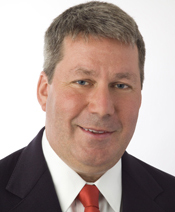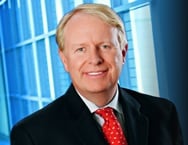With the excitement over Actavis' ($ACT) white-knight swoop-in for Allergan ($AGN) out of the way, it's time to take a closer look at the transaction--and how it compares with Valeant's ($VRX) proposed Allergan tie-up.
 |
| Valeant CEO J. Michael Pearson |
Actavis obviously forked over more than Valeant was willing to--CEO J. Michael Pearson called the $66 billion offer a price he "couldn't justify." Even so, Actavis isn't planning to match Pearson's cost-cutting plans. Notorious for his determination with the ax, Pearson had promised to slash at least $2.7 billion in annual costs, with 80% of that squeezed within the first 6 months.
Actavis is looking at a more modest--but still hefty--$1.8 billion in savings, with the majority realized in the first year after closing. That includes about $450 million in financial synergies, and excludes manufacturing overlaps. And it's on top of the $475 million in cuts that Allergan announced in July, a move designed to fend off Valeant.
That all falls short of Valeant's pledge, but here's the kicker, especially for Allergan, which touted the importance of its R&D spending throughout Valeant's hostile pursuit: Actavis says it's committed to about $1.7 billion in R&D investment, or about 7.3% of the $23 billion in combined revenue the companies expect to rake in next year. That's nowhere near the 20%-plus at some Big Pharmas, but about half of the combined company's sales will be in generics, which are cheap to develop. And while that doesn't touch the 17% of revenue the Botox maker has historically spent on research, it dwarfs the R&D-averse Valeant's 3%.
While analysts throughout the takeover battle agreed that both partners offered earnings-building deals for Allergan, combining with Actavis brings "less risk to Allergan brands suffering through the consolidation process," Leerink Parnters analysts Jason Gerberry and Seamus Fernandez wrote in an October note to investors. While Pearson highlighted the importance of Valeant's sales force to a combined company's success and stressed that he'd need their marketing muscle, Actavis has more to offer in that department, the analysts wrote. Specifically, Monday's deal will "unite two of the best marketing organizations in pharma," they said.
On to some of the nitty-gritty details: Actavis CEO Brent Saunders will helm the combined company, with former chief Paul Bisaro staying on in the exec chairman's role. When the deal closes, Actavis has agreed to "immediately" appoint two of Allergan's directors to the new company's board, it said in an SEC filing. And if the deal doesn't close? Actavis will pay a $2.1 billion breakup free if antitrust issues get in the way or the board changes its mind. If a lack of approval from its own shareholders thwarts the buyout, that fee drops to $1.3 billion.
 |
| Allergan CEO David Pyott |
As for Allergan CEO David Pyott, he's expected to pocket a $34.9 million in golden parachute take-home, including cash and options. And Valeant deal partner Bill Ackman, who once accused Pyott of blocking his deal for personal financial reasons? Despite coming out on the losing side of the takeover contest, as Allergan's largest shareholder with 9.7%, he'll make more than $2.6 billion in profit on the acquisition.
- read Actavis' 8-K (PDF)
- see its investor presentation (PDF)
Special Reports: 20 Highest-Paid Biopharma CEOs of 2012 - David Pyott, Allergan | The most influential people in biopharma today - J. Michael Pearson, Valeant | Top 10 generics makers by 2012 revenue - Actavis